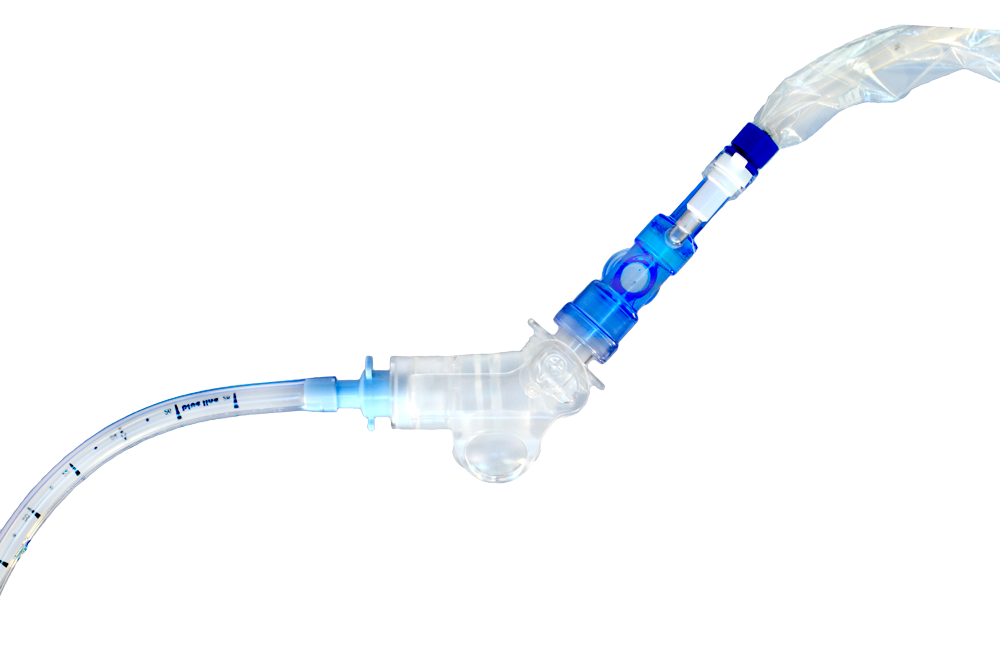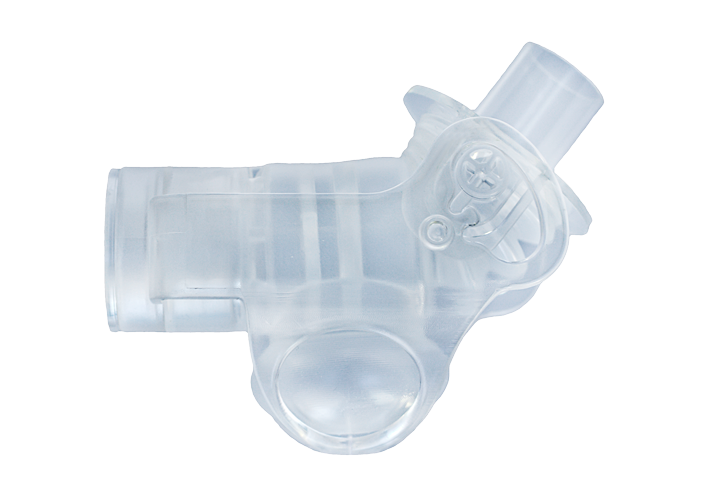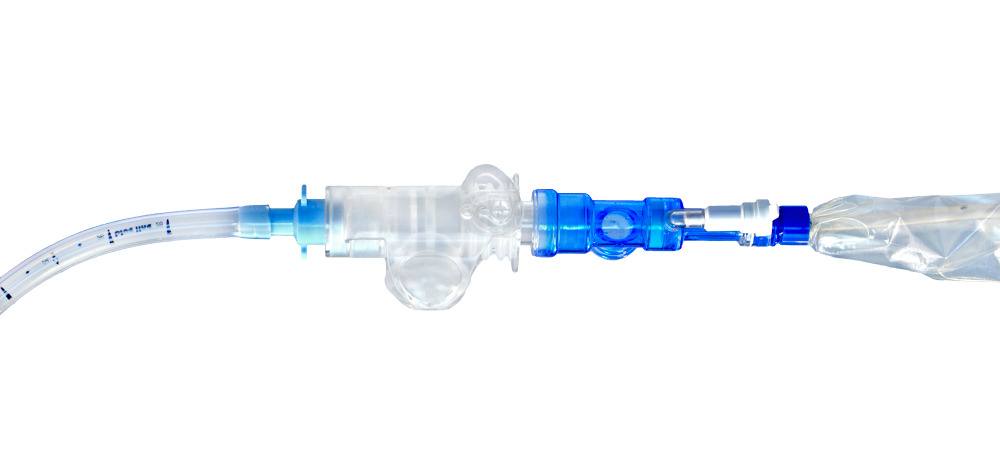Trach-Assist
Trach-Assist is an innovative airway secretion management system designed for use between an endotracheal or tracheostomy tube and a closed suction system.
Secretions are collected in a reservoir and can be removed with a closed-suction cather without breaking the respiratory circuit, which reduces the risk of VAP, hypoxemia, and lung de-recruitment.
Trach-Assist® is lightweight (less than 1 ounce), features a swivel fitting for easy positioning, prevents splashing from coughs during extubation or resuscitation, and can be used with or without a closed suction system.
Features Include:
– Low internal volume
– Lightweight (less than 1 oz.)
– Easily adjustable to the Reservoir Suction Position
– Allows the clinician to suction the patient’s artificial airway normally
– Swivel fitting allows for easy positioning
– Can be used with Endotracheal or Tracheostomy tubes
– Can be used with or without a closed suction system
– Prevents splashing from coughs during extubation or resuscitation
Issues with Circuit Breaks
Circuit “breaks” have been identified as risk factors for:
– VAP (Ventilator Associated Pneumonia)
– Incidence of lung de-recruitment and hypoxemia
– Loss of high PEEP
The CDC Guidelines for Preventing Health-Care-Associated Pneumonia state,
“Do not change routinely on the basis of duration of use the breathing circuit (i.e., ventilator tubing and exhalation valve and the attached humidifier) that is in use on an individual patient. Change the circuit when it is visibly soiled or mechanically malfunctioning.”
VAP is one of the major hospital acquired infections (HAI). The reduction/prevention of these infections is extremely important to the healthcare system.
Issues with Secretions in Circuits
Currently, secretions that are not managed can lead to premature circuit breaks due to soiled circuit components, such as HME filters, pneumotachs, and aerosol tees.
Increased circuit changes can lead to:
- Increased costs associated with circuits and circuit components
- Increased labor associated with circuit changes
- Increase waste associated with circuit changes
- Secretions that permanently travel back and forth between the artificial airway and the circuit.
- Secretions that become trapped in the ventilator circuit, such as in the narrow passageways of other components, which may lead to ventilator alarms.



